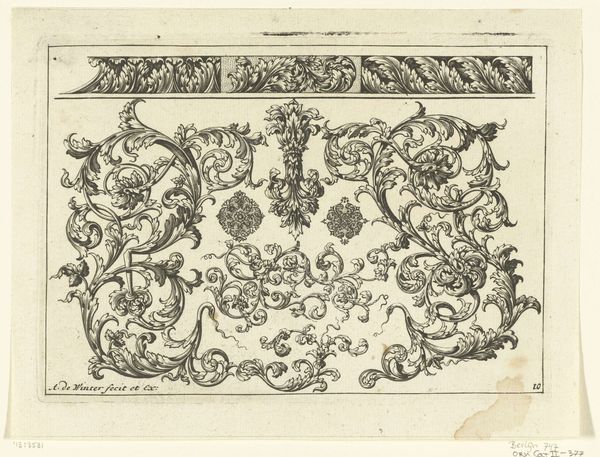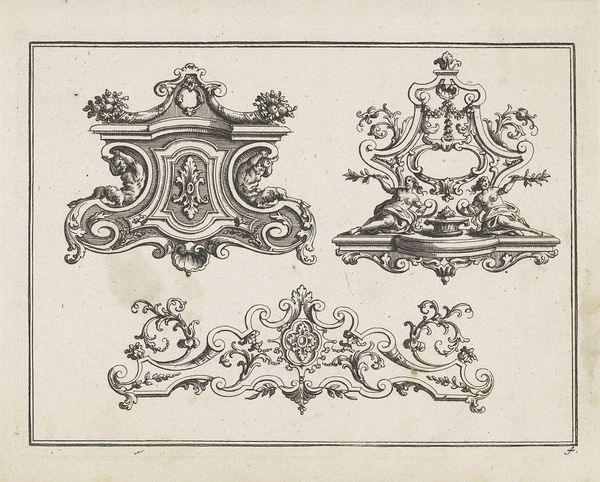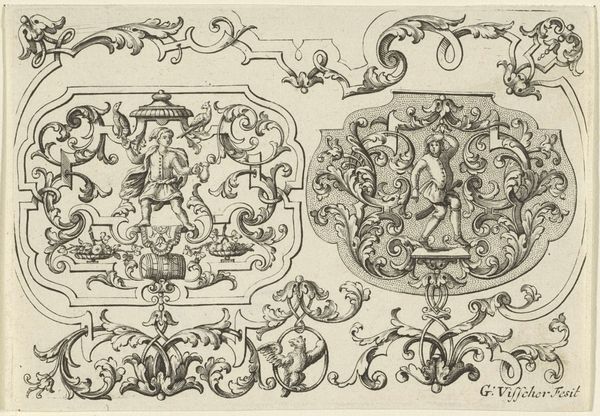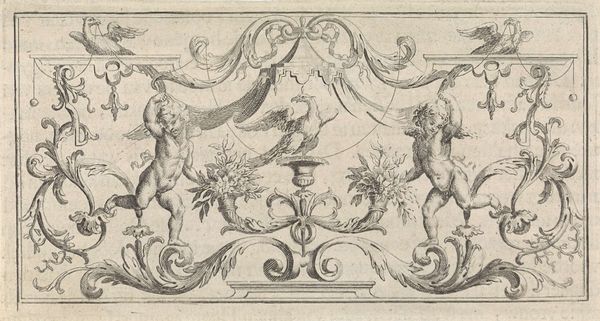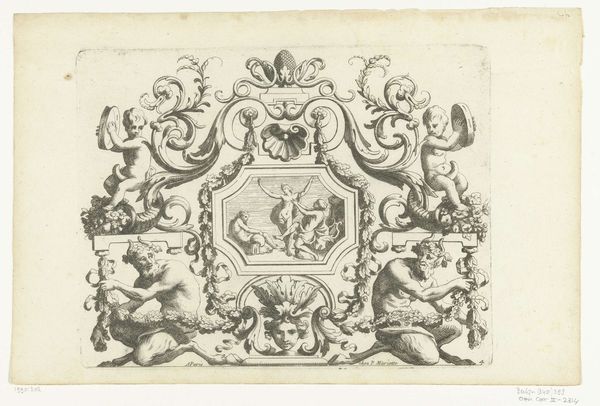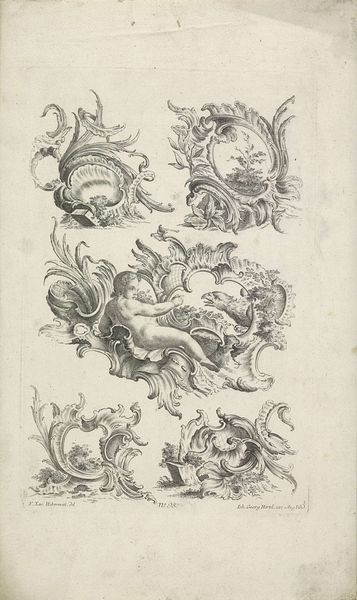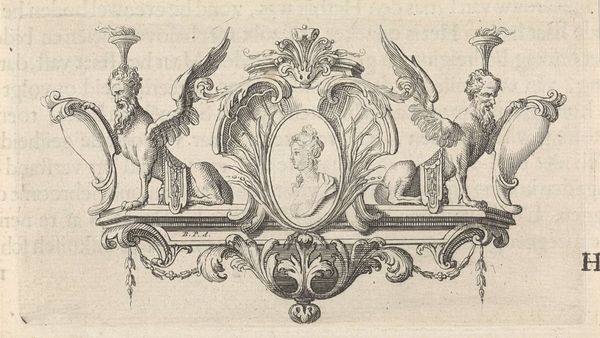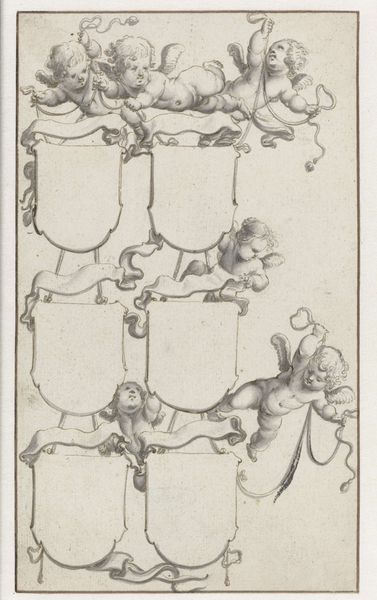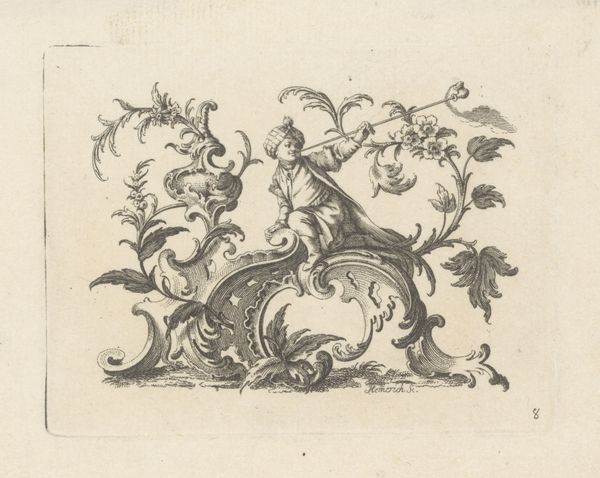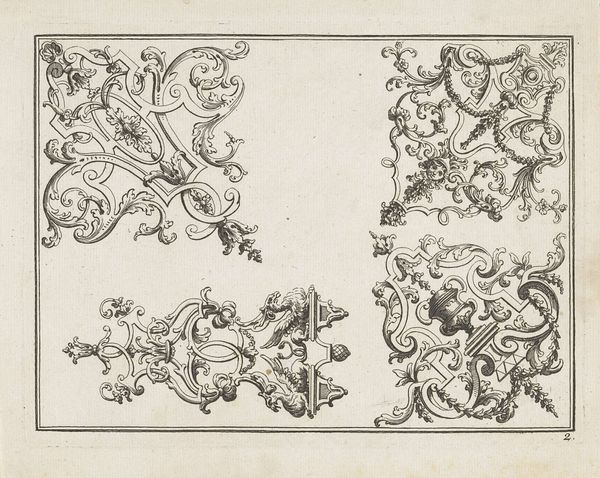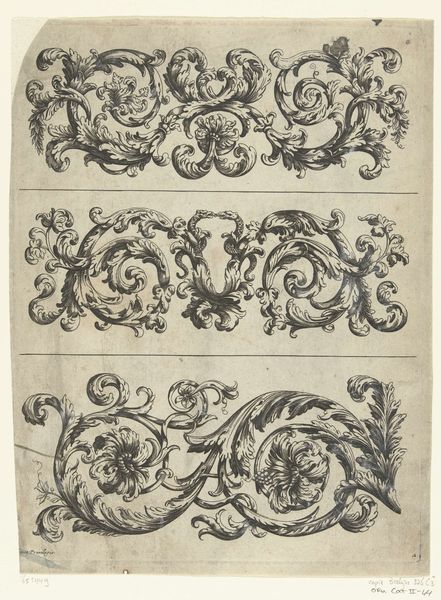
drawing, ink, engraving
#
drawing
#
baroque
#
form
#
ink
#
line
#
decorative-art
#
engraving
Dimensions: height 138 mm, width 184 mm
Copyright: Rijks Museum: Open Domain
Editor: This drawing, titled "Vier ontwerpen voor zilverbeslag met figuren" or "Four designs for silver mounts with figures", is an ink engraving dating from the early 18th century. I find the overall impression of these ornamental designs quite playful, despite their formal Baroque style. What can you tell me about this work? Curator: What strikes me is how this seemingly innocuous design sheet reveals the deep intertwining of power, wealth, and artistic expression. These designs, intended for silver, would have adorned objects owned by the elite, reinforcing their status through elaborate display. The cherubs, the stylized foliage - they aren't simply decorative. What values do you think they represented in the social structure of the 1700's? Editor: I suppose they symbolized wealth and status, being decorative elements meant for expensive items. The presence of cherubs and lush foliage may have suggested opulence. Curator: Precisely. Now, consider the fact that the Baroque period was also marked by vast colonial expansion and trade. Silver itself, of course, was a globally sourced commodity. How might we interpret these designs as subtle manifestations of a globalized economy built on unequal power dynamics and access? Who did such displays of wealth exclude or marginalize? Editor: That's a really interesting point. Thinking about the global context casts a different light on what seems like simply an attractive design. The very materials are connected to historical exploitation. It makes you think about where the wealth that supported these artistic expressions actually came from. Curator: Exactly. And recognizing those historical dynamics empowers us to see beyond the aesthetic surface, to critically engage with art’s role in shaping social hierarchies. Editor: That really changes how I view decorative art. I guess I saw them as 'pretty' rather than political statements. Curator: Art serves so much more than mere aesthetics; it mirrors and shapes the society that creates it. By unveiling the stories behind the images, we equip ourselves to have more productive and enlightened conversation about history, privilege and its place within art.
Comments
No comments
Be the first to comment and join the conversation on the ultimate creative platform.
